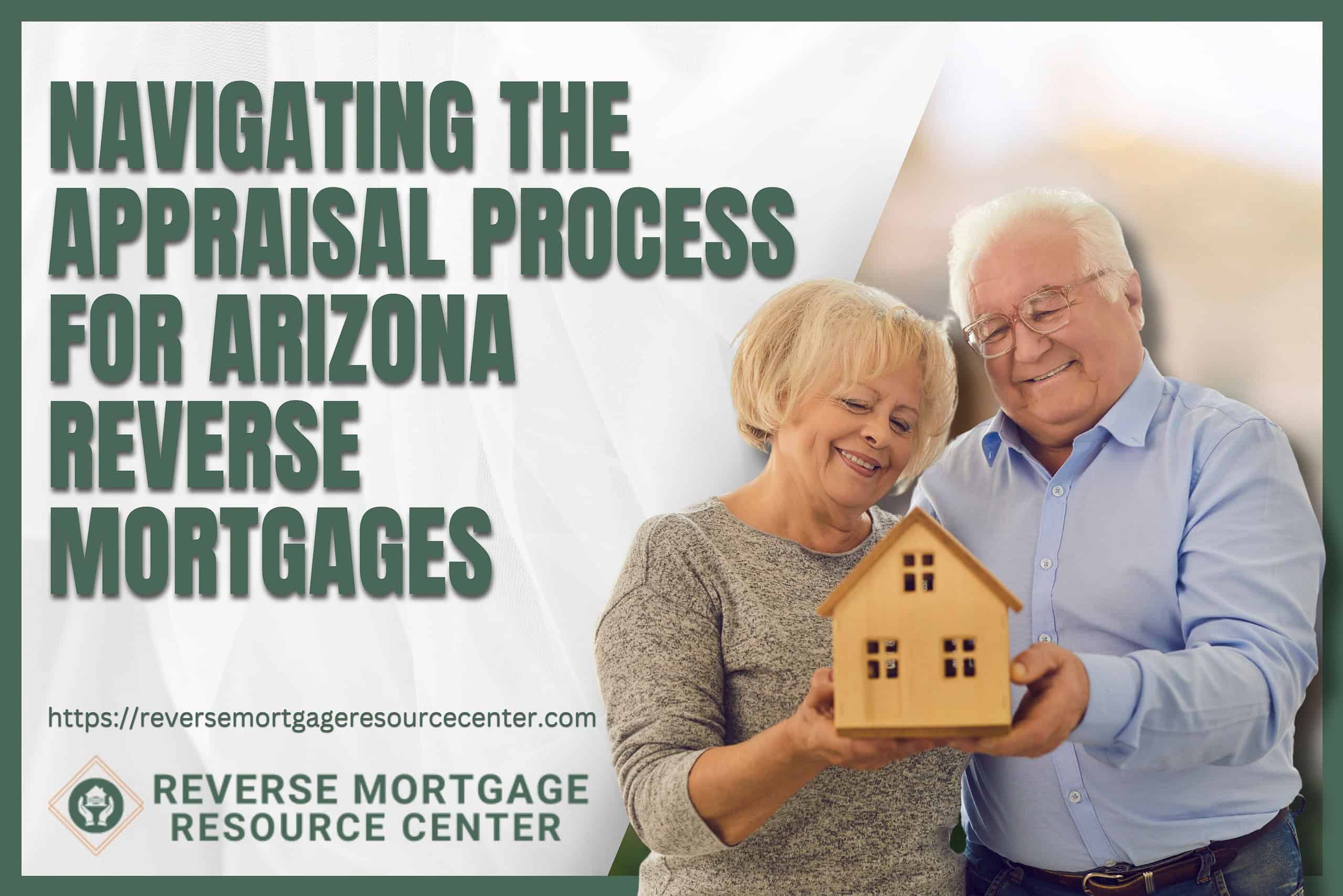Navigating the Appraisal Process for Arizona Reverse Mortgages
Arizona’s gorgeous landscapes and lively communities have made it an appealing place for seniors looking for financial stability through reverse mortgages. These financial instruments enable homeowners aged 62 and up to turn a portion of their home equity into readily accessible income tax-free funds. However, to obtain a reverse mortgage in Arizona, you must first go through the appraisal procedure. We will walk you through this essential phase in this post, providing insights into the requirements, the function of appraisers, and the ramifications for your reverse mortgage journey.
The Significance of Appraisal in Reverse Mortgages
A reverse mortgage appraisal is a critical component of the application process. It serves various critical functions:
1. Determining Eligibility
Before applying for a reverse mortgage, you must check that your home fits the eligibility criteria established by the United States Department of Housing and Urban Development (HUD). An appraisal is required to determine the property’s value and certify that it meets the minimum standards. Your principal residence must fulfill HUD property guidelines and have enough equity to sustain the loan.
2. Establishing Loan Amount
The home’s appraised value directly impacts the amount you can borrow with a reverse mortgage. The higher the evaluated value, the more equity you can access. It is thus in your best interest to have a realistic grasp of the value of your property, as this directly influences your financial possibilities.
3. Protecting Borrowers and Lenders
Appraisals safeguard borrowers and lenders by ensuring that the loan amount is acceptable and sufficient collateral exists to support the loan total. This protects borrowers from overborrowing and lenders from taking on excessive risk.
The Appraisal Process
Understanding the appraisal process is critical for people interested in obtaining a reverse mortgage in Arizona. Let’s go over the important steps:
1. Selection of an Appraiser
A critical first step is to select a qualified appraiser. Typically, your lender will select the appraiser based on HUD rules. The appraiser should be state-certified and have prior expertise evaluating properties in your area.
2. Property Inspection
Once an appraiser has been selected, they will come to your home and conduct a complete inspection. The appraiser will analyze the condition of your home, its size, features, and any improvements or renovations during this visit. They will also compare your house to recent sales of comparable homes in the neighborhood.
3. Home Valuation
The appraiser’s conclusions will be used to estimate the market value of your property. It is crucial to understand that the appraised value may differ from your estimate of the value of your home. The appraiser’s valuation is used to calculate the reverse mortgage.
4. Reporting
The appraiser summarizes their findings into a detailed report, which is then delivered to your lender. The report describes the property’s condition, valuation, and any repairs or improvements required to fulfill HUD guidelines.
5. Lender Review
The appraisal report will be reviewed by your lender and used to establish the maximum loan amount available. The lender will consider your age, interest rates, and the precise reverse mortgage package you’ve chosen.
6. Resolution of Issues
If the appraisal report identifies any required concerns or repairs, these must be addressed before proceeding with the reverse mortgage. This could include putting money aside for repairs or addressing any safety problems. This is a vital stage that may cause your loan application to be delayed, so fix any errors as soon as possible.
Appraisal Criteria and HUD Requirements
HUD establishes specified property standards that must be met for Arizona reverse mortgages. These standards ensure the home’s safety, habitability, and the collateral’s soundness. Some of the essential needs are as follows:
1. Structural Integrity
The property must be structurally solid and free of major flaws that could jeopardize its value or safety.
2. Safety and Security
The living atmosphere in the home must be safe and secure. Handrails and smoke detectors are examples of such features.
3. Sanitary Conditions
The property’s plumbing, heating, and electrical systems should be adequate. It must also be free of any potential health risks.
4. Weather Resistance
The property should be able to endure the local temperature and weather conditions.
5. Minimum Property Value
To be qualified for a reverse mortgage, you must have a minimum property valuation, which varies by location and can alter over time. The particular threshold for your area will be known to your appraiser.
Maximizing Your Property Value
To get the most out of your reverse mortgage, you must optimize the value of your house throughout the appraisal process. Here are some pointers:
1. Maintain Your Home
Regular maintenance can help keep your property in great shape and increase its value. Before the appraiser arrives, take care of any lingering repairs or difficulties.
2. Curb Appeal
First impressions are important. Maintain a neat appearance on the exterior of your property.
3. Document Improvements
Provide documents and receipts to the appraiser if you’ve done additions or renovations to your home. These enhancements can increase the value of your home.
4. Clean and Declutter
A clean, clutter-free home may appear more large and desirable to the appraiser, impacting the price.
5. Be Present During the Appraisal
While you are not required to accompany the appraiser, being present to answer any questions is advantageous. Sharing your property information can help provide a more accurate appraisal.
Implications for Your Reverse Mortgage
The appraisal’s conclusion considerably impacts the terms of your reverse mortgage. Consider the following major implications:
1. Loan Amount
The appraised value directly impacts the maximum loan amount you can receive. A better evaluation can mean more money in your pocket.
2. Mortgage Insurance Premium (MIP)
The MIP is a cost that must be paid for federally insured reverse mortgages. It is calculated using the appraised value. Therefore, a greater valuation may result in a larger MIP.
3. Property Condition
If the appraisal finds any repairs or improvements are required, these must be completed before the loan is approved. This can influence your timetable and costs.
4. Home Equity
A successful evaluation helps you keep your home equity, which can be a great asset for your financial security.
REVERSE MORTGAGE RESOURCE CENTER ~LIVE LIFE ON YOUR TERMS~
Our Lending Team has been serving our clients since 2004. We are passionate about serving our clients with integrity to help them achieve their financial goals.







